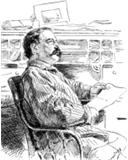
| The |  |
Papers |
|---|
Promising to organize the unorganized, especially black, women, immigrant and unskilled workers, early leaders like Bill Haywood of the Western Federation of Miners, and socialists Eugene Debs and Daniel DeLeon, took it for granted that industrial unionism was the key to labor solidarity. Yet from the very beginning, the leadership could not agree on goals or strategies. In fact within a few years both Debs and the Western Federation of Miners -- the IWW's largest affiliate -- would leave the organization, and Daniel DeLeon would launch a rival IWW. Thus, while the IWW captured the interest of intellectuals and social reformers -- especially after its victory in the 1912 textile strike in Lawrence, Ma.-- the organization was never able to consolidate its gains or build a stable organization. In fact, just two years after the Lawrence victory, the IWW unions there had dissolved.
The IWW probably had its best success organizing migratory workers who followed the harvest in the West. These were some of the most exploited workers in the country and they welcomed the IWW's fiery rhetoric of class struggle. But that rhetoric had a double edge: During the First World War, radical IWW leaders were accused of sabotaging the war effort and hundreds of members were prosecuted under federal and state espionage and sedition laws. Although the IWW still exists, the organization never recovered from its wartime experience and by 1920 the IWW was all but defunct.
In Gompers' view, IWW supporters were "rainbow chasers" who thought solidarity could be imposed from above, and IWW leaders were spoilers, determined to rule or ruin the labor movement. Indeed Gompers and other trade unionists suspected that antiunion forces funded the IWW in order to undermine collective bargaining and link organized labor to violence and sabotage in the public mind. Nevertheless Gompers did what he could to secure the release of IWW supporters imprisoned for violation of the Espionage Act or for refusing to serve during the war.
Labor History
SG Biography
SG Quotations
AFL
Knights of Labor
IWW
Time Line
The SG Papers
The Project
Book Edition
Documents
Microfilm Edition
To Order
Research Tools
Bibliography
Index to Volumes
Micro Reel Lists
Subject Guides
Labor Links
Glossary
Contact Us
Home
WEB Accessibility